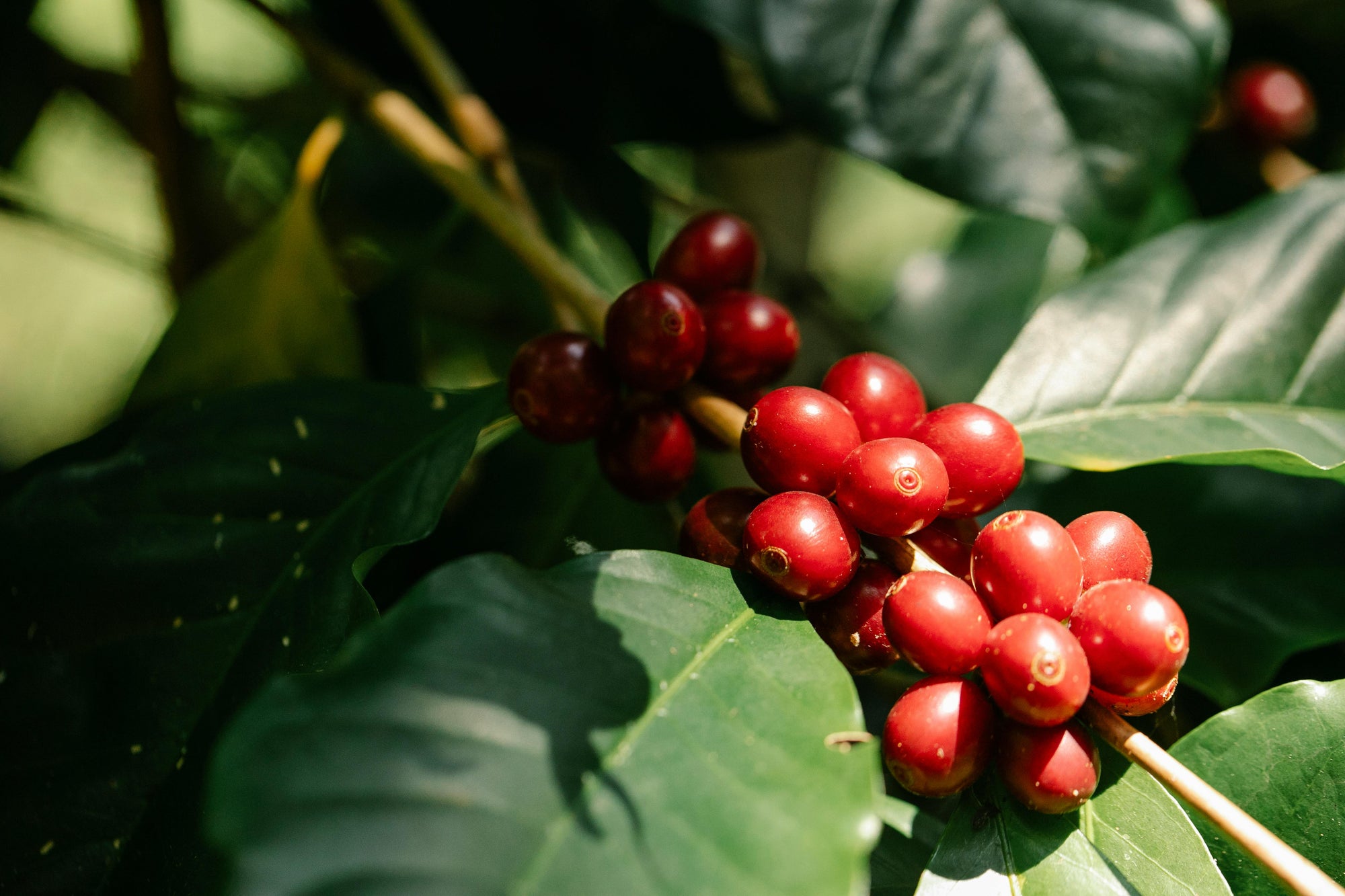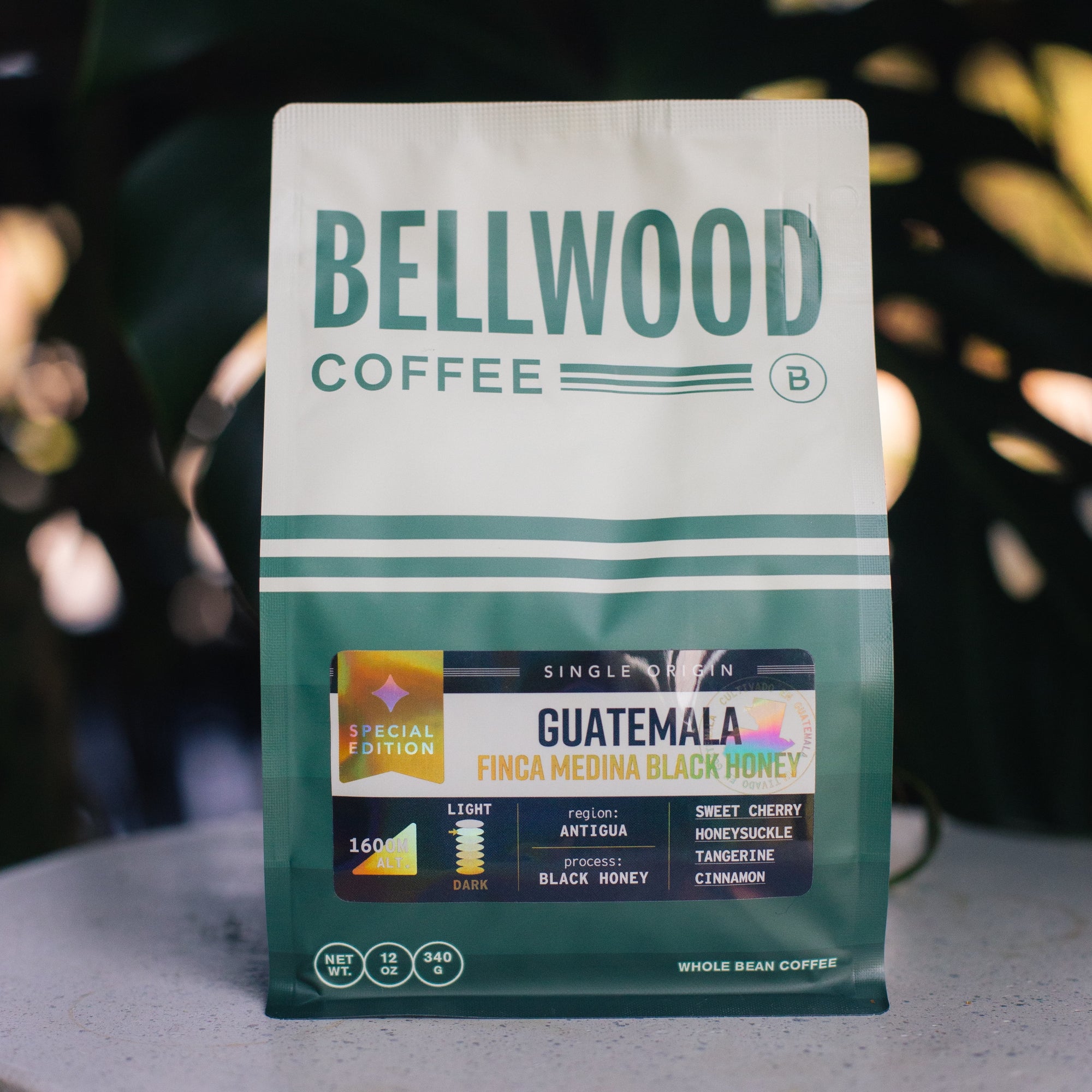Understanding Coffee Processing Methods: From Cherry to Bean
The journey of coffee, from the moment the cherry is picked from the tree to the roasted beans you brew at home, is a fascinating process filled with critical decisions that shape its flavor. Among these, the choice of processing method at the farm plays a pivotal role. Let’s delve into the three primary methods—Natural, Washed, and Honey—and uncover how each impacts the final coffee profile.
Natural Processing (Dry Method)
Process Overview
In natural processing, whole cherries are spread out to dry in the sun with the fruit left intact. The drying process can take several weeks, during which the cherries are turned regularly to ensure even drying and prevent spoilage. Once completely dried, the dried fruit and skin are removed to reveal the coffee beans inside.
Flavor Impact
Natural processing often results in coffee with a fuller body and intense fruity, wine-like flavors. The retained fruit imparts a berry-like sweetness and, in some cases, a hint of fermented notes. This method is prized for producing vibrant and unique flavor profiles but can sometimes be inconsistent due to the complexity of the drying process.
Washed Processing (Wet Method)
Process Overview
Washed processing begins with mechanically removing the outer cherry flesh. The beans, still coated with sticky mucilage, are then fermented in water tanks to break down the remaining fruit residue. After fermentation, the beans are thoroughly washed to remove all mucilage and then dried.
Flavor Impact
This method is known for delivering a cleaner and brighter taste. The fermentation and washing process highlights the coffee’s natural acidity and clear origin characteristics. Washed coffees are often described as having more consistent and refined flavors compared to natural-processed beans.
Honey Processing
Process Overview
Honey processing is a hybrid method where the cherry’s skin is removed, but varying amounts of mucilage are left on the beans during drying. Depending on the amount of mucilage retained, the process is categorized into different levels, such as white, yellow, red, or black honey, with black honey involving the most mucilage and longest drying time.
Flavor Impact
Honey processing strikes a balance between natural and washed methods. It enhances sweetness while introducing subtle fruit notes. Compared to natural-processed coffee, honey-processed coffee offers more clarity and complexity, though less brightness than fully washed coffee.
Environmental Considerations
Each processing method impacts the environment differently. Natural processing uses the least water, making it a sustainable choice in water-scarce regions. However, it requires significant space and careful monitoring. Washed processing, while delivering consistent results, consumes large amounts of water. Wastewater from washing can be treated and repurposed to minimize environmental impact. Honey processing falls in between, with moderate water usage and manageable waste.
Impact on Quality
All three methods can produce exceptional coffee when matched to the bean’s characteristics and regional climate. Natural processing works well in dry climates, while washed processing thrives in areas with reliable water access. Honey processing offers versatility, allowing producers to experiment with flavor profiles to meet market demands.
Additional Processing Methods
In addition to these three primary processing methods, coffee producers have increasingly been experimenting with bold new methods—from fermenting the coffee cherries in anaerobic (zero oxygen) tanks, to co-fermenting the beans alongside other fruits, to "thermal shock" methods that involve putting the beans in extreme temperature environments. Below is a list of just some of the experimental processes that have started to become more popular.
- Pulped Natural - Similar to honey processing but typically involves removing more of the mucilage, common in Brazil.
- Low Oxygen Natural - Coffee cherries or beans are fermented in sealed tanks with little oxygen.
- Anaerobic Natural - Coffee cherries or beans are fermented in sealed, oxygen-free tanks, often leading to unique flavor characteristics.
- Thermal Shock - Combines hot and cold water treatments to enhance complexity and reduce defects.
- Carbonic Maceration - Borrowed from winemaking, coffee cherries are fermented in a carbon dioxide-rich environment.
- Co-ferment - Coffee cherries are fermented alongside other, often tropical fruits.
Share:
Try our range of coffees







